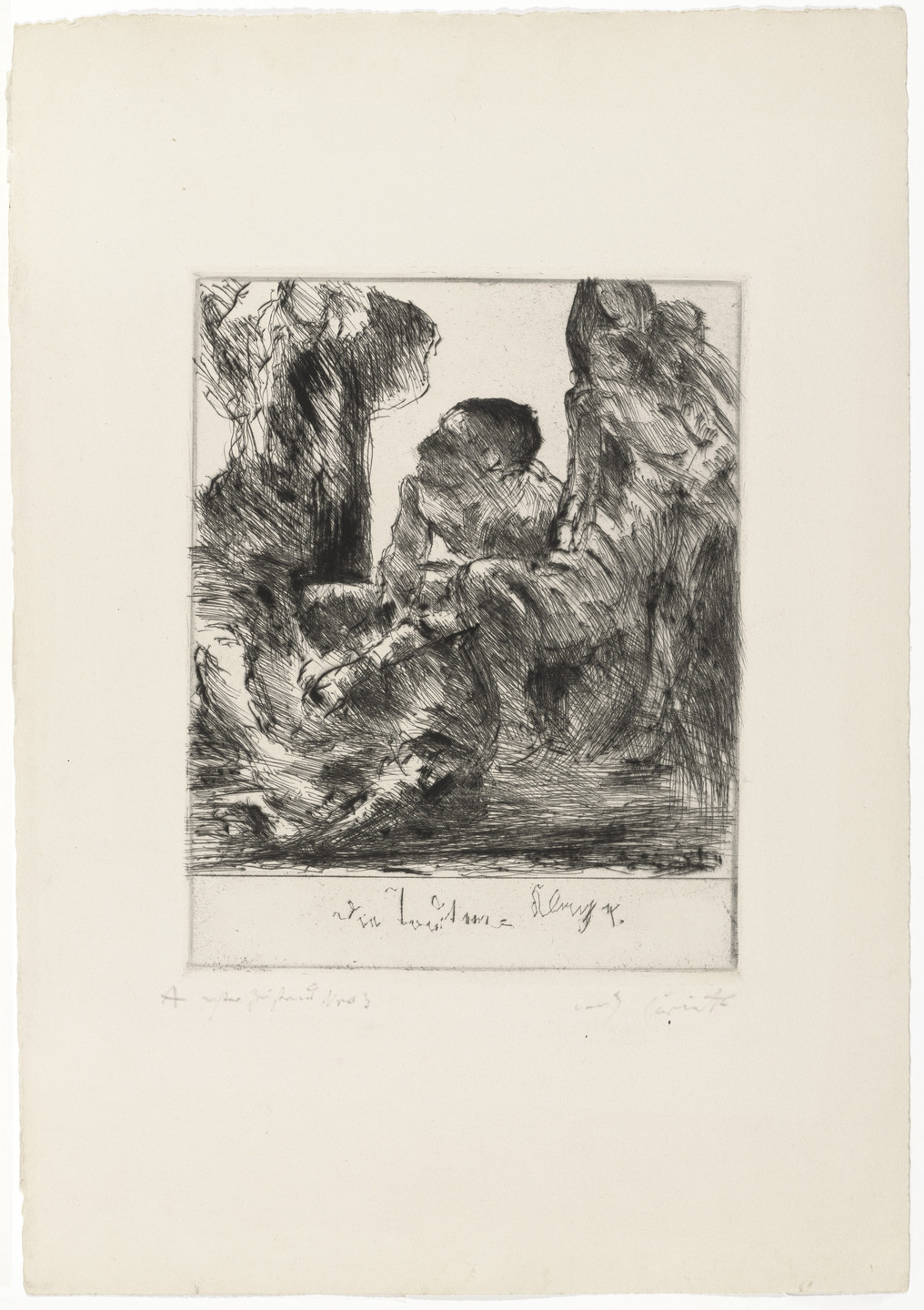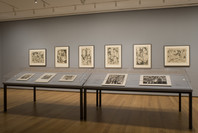Lovis Corinth reworked ten of his paintings as prints for this portfolio, which represents three of his preferred subjects—nudes, history, and literature. The paintings, originally executed between 1896 and 1915, had long since passed from his possession; one had been destroyed during World War I. Many had special significance to Corinth: Totenklage (Death lament) hung in his studio as his daughter was baptized, and Der Sieger (The victor) portrays him and his wife. For these graphic versions, Corinth completely reinterpreted the earlier compositions. In Grablegung (Burial), he reduced the number of figures in order to focus on the dead Jesus. He transformed Die Geburt der Venus (The birth of Venus) from a precisely detailed painting of academic nudes to a sketchy, barely legible swirl of frenetic lines surrounding voluptuous female bodies. These prints showcase Corinth's shift later in life toward a more expressive approach, in which he employed passionate draftsmanship and dramatic contrasts of light and shadow to convey emotion.
PUBLISHING HISTORY
In the inflationary print boom of the early 1920s, Corinth eagerly embraced printmaking for its financial promise. Julias Elias, a friend and important art critic, commissioned this portfolio for Propyläen-Verlag, a new fine-art imprint of Germany's largest publishing house at the time, the Berlin-based Ullstein.
Publication excerpt from Heather Hess, German Expressionist Digital Archive Project, German Expressionism: Works from the Collection. 2011.

